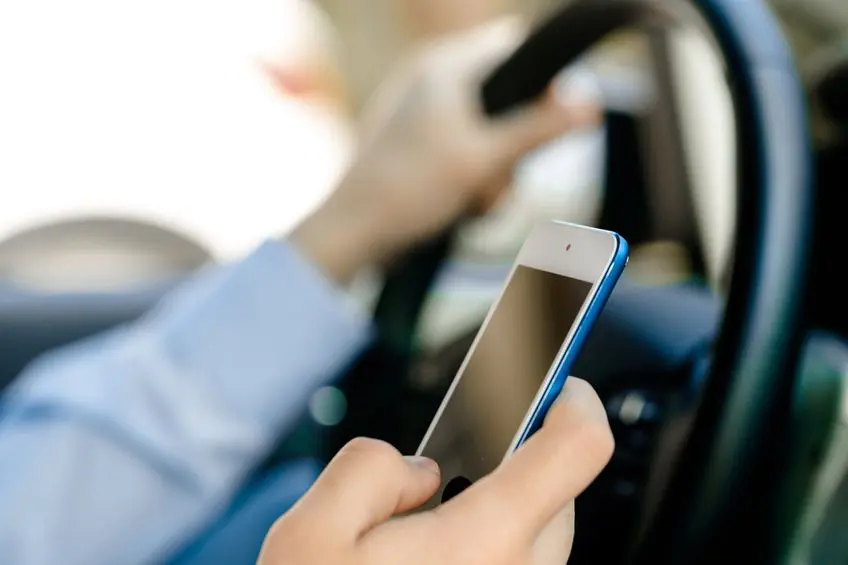Phone-related driver distraction still on the rise

Cellphones have been a root cause of distracted driving since they first became popular in the 1990s. However, cellphone manipulation while driving continues to change. A 2018 study conducted by the Insurance Institute for Highway Safety (IIHS) in Virginia found that drivers were 57% more likely to be found manipulating or using a cellphone than a survey conducted in 2014. According to the IIHS, cellphone use was a contributing factor in over 800 crash deaths in the United States in 2017 alone. But while drivers were less likely to be seen simply holding or talking on a cell phone in 2018 than 2014, they were more likely to be observed actually manipulating their phones.
In 2014, only 2.4% of Virginia drivers were observed using their cellphones. However, in 2018 this number rose to 3.4%. This is compared to the 4.1% of Virginia drivers observed talking on a cellphone in 2014, whereas in 2018 that figure dropped to 3.7%. Further, the AAA Foundation for Traffic Safety reported that 64% of respondents in a 2018 national survey consider distracted driving a much larger problem than three years ago. This is most likely because, while many new car models have in-vehicle systems that allow drivers to talk and make phone calls in a much easier fashion, cellphones have access to many more applications that can too easily become a distraction. Some of these apps include Google Maps, Spotify, Instagram, and Snapchat.
The IIHS reports that approximately 37,000 people died in car crashes in 2017. Based off of this information, the AAA Foundation for Traffic Safety as well as the Virginia Tech Transportation Institute have found that fatal crash risk is 66% higher when using a cellphone. Therefore, the IIHS makes the assumption that over 800 car crash fatalities in 2017 can be attributed to cellphone manipulation. Data collected has also suggested that drivers have begun to use their phones in riskier ways. Drivers take their eyes off the road when they text, dial or search on the web. Each of these actions, along with many more, are considered manipulating a phone, and severely affect how drivers process information on the road. For example, drivers having cellphone conversations tend to focus their gaze on the center of the roadway. However, their attention may still be diverted, making it difficult to process what’s in front of them.
To conduct their 2018 survey, the IIHS placed observers at 12 different locations across four communities in Northern Virginia. These locations included roundabouts, straight stretches of roads, and signalized intersections during the mornings, afternoons, and early evenings of weekdays. At these locations, researchers observed approximately 12,000 drivers. Observers were instructed to watch for drivers taking part in one or more of 12 visible secondary behaviors, while moving or stopped at red lights. These secondary behaviors were:
- Talking on a hand-held cellphone
- Manipulating a hand-held cellphone (excluding looking at a phone in a mount)
- Simply holding a hand-held cellphone
- Wearing a Bluetooth earpiece or headset with mic
- Wearing headphones or ear buds
- Manipulating in-vehicle system (i.e., radio, climate control, touchscreen display or other controls)
- Manipulating or holding a mobile electronic device other than a cellphone
- Talking or singing
- Eating or drinking
- Smoking
- Grooming
- Other (reading print material, reaching for an object, etc.)
While cellphones are often the main focus of distracted driving, drivers are distracted by secondary behaviors more often.
The IIHS also reports that about 14% of drivers were engaged in non-cellphone related secondary behaviors in both 2014 and 2018, a number that, notably, exceeds the proportion of drivers observed using cellphones in both years. The National Highway Traffic Safety Administration notes that 8-10% of all crash deaths in recent years have been related to distraction. Furthermore, over the past three years the number of crash deaths from distracted driving have trended downward, falling 9.3%. In 2016, this number was 3,490, while in 2017 that number fell to 3,166. However, the IIHS also stresses that these numbers are likely underestimated. This data is difficult to collect, as it largely depends on people being truthful about their cellphone use.
Posted in Munley News.
Tagged Distracted Driving









